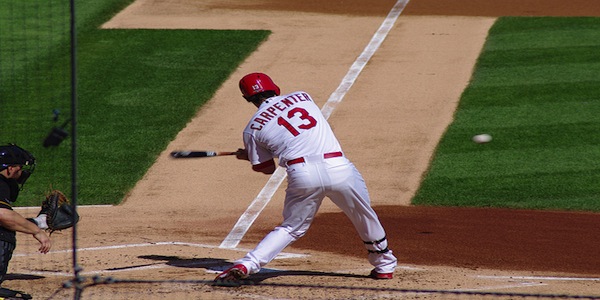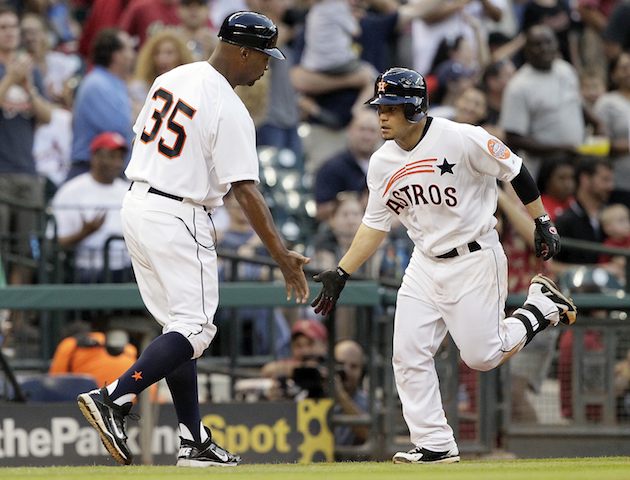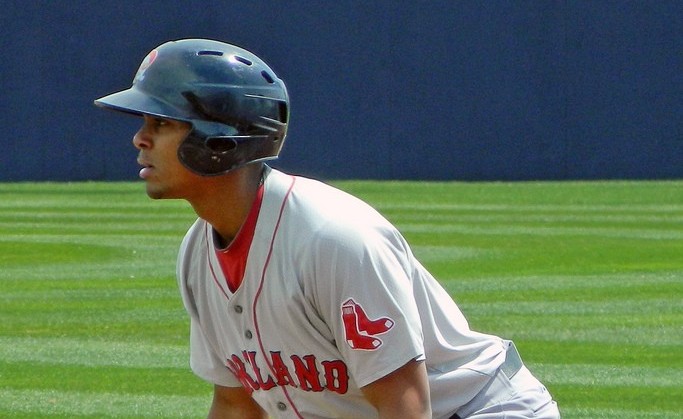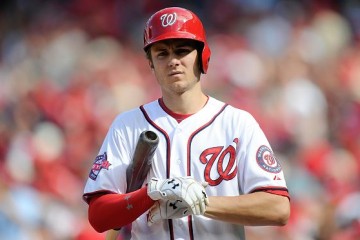2014 Fantasy Baseball: Gerard’s Rankings, Shortstop
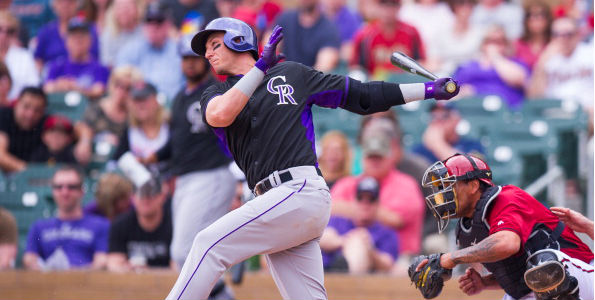
Troy Tulowitzki and Hanley Ramirez lead the list of top ranked shortstops for your fantasy baseball draft. My rankings will give you the top four tiers of shortstops, along with strong plays in each 5×5 category.
Before you read on, read this.
Oh, and this:
A quick introduction on the layout:
First, we’ll go through a few tiers of top players at the position. These are guys who either deliver above average all around production, or have one transcendent skill. They are your building blocks. The “Total Score” is an average of all of the individual categories, weighted to the categories where that position is most likely to contribute positive value.
From there, we’ll divide up the remaining players based on specific category contributions. These guys are the puzzle pieces. Their contributions will be limited, so their specific value depends on the gaps that exist between the building blocks that you’ve already drafted.
One final thing: These are my rankings, but they’re guidance, not gospel. I feel pretty strongly about the dividers between the tiers, but once you get into a tier, if you want to take Elvis Andrus over Jean Segura, or you’re not buying in on Brad Miller, I’m cool with it. Every drafter should draft to his own instincts; I’m just giving you some tools to sharpen your senses.
Tier 1
Troy Tulowitzki is the clear top option at shortstop. I’d expect people to be surprised by the size of the gap is between Tulo and the second tier, but no other shortstop brings such a potent combination of batting average, power, and run production.
Since 2007, when Tulowitzki became a full-time starter, there have been five individual shortstop seasons in which a player hit 25 home runs while maintaining a batting average better than .300. Three of those seasons belong to Tulo (2010, 2011, and 2013). Over that same time span, he’s also the only shortstop to post multiple seasons in which he both scored and drove in 90 runs. He doesn’t offer true five-category production (Tulo hasn’t stolen double-digit bases in a season since 2010), but he’s arguably the best option at his position for every other individual category.
The injuries are certainly a concern, but Tulo’s injury risk relative to his contemporaries at shortstop is greatly overstated. Sure, he gets banged up a bit more often than the average player, but he usually ends up playing enough games to be valuable. Since becoming the full-time starter in 2007, he’s played at least 100 games in every season but one. It’s a bit of an arbitrary distinction and not a particularly impressive one at that, but neither Hanley Ramirez nor Jose Reyes can match it, and there’s no reliably healthy option at shortstop with anything close to Tulo’s track record of production.
Tier 2
While I believe that Ramirez and Reyes deserve to be drafted around the same time, there’s no question that Hanley has a substantially higher ceiling. You know those five 25/.300 seasons I mentioned a couple paragraphs ago? Ramirez has the other two.
We’re talking about him down here because those seasons occurred in 2007 and 2008, and Hanley’s been frequently incapacitated by bouts of injury and inconsistency since then. Still, he’s got a crazy high ceiling; that alone makes him worth a look in the late second round.
The same logic extends to Reyes, who’s no longer a threat to crack 40 steals, but remains one of the more stable sources of middle infield batting average. He’s hit below .280 just once since 2006, but I’ll excuse a .279 batting average over 36 games in 2009.
Tier 3
Out of all the shortstops I’ve ranked here, nobody has a better chance to significantly outperform his ranking than Jean Segura. He’s already proven that he can turn in a season of elite fantasy production; by ESPN’s Player Rater, Segurawas the most valuable shortstop in fantasy last year. But a poor second half has unfairly stymied his momentum.
His BABIP plunged, his power disappeared, but those can be explained. The BABIP drop is merely an illustration of the opposite poles of luck; he’s likely to settle somewhere in the .320s this season, just like he did last year. The power loss was probably just fatigue. Prior to logging 623 plate appearances last season, Segura had never reached 600 trips to the plate in any season at any level. In fact, he hadn’t logged even 500 plate appearances in a season since 2010. We wouldn’t be surprised if a young pitcher lost velocity at the tail end of a big innings jump; why can’t we extend the same courtesy to shortstops?
Rather than explaining away the negatives about Segura, let’s focus on the positive, that he never stopped running. Even as his OBP sagged to .268 in the second half, Segura’s aggressiveness on the basepaths never waned.
In the first half, he ran once every 12.4 plate appearances. In the second half, that number jumped to 9.0. He was caught more often in the second half, another indication that he was fatigued, but the fact that he never lost his aggressiveness makes me confident that he’ll bounce back and start strong this season.
Still, for all of the nice things I just wrote about Segura and all of the noise that’s been made about Billy Hamilton, Everth Cabrera is my pick to lead the National League in stolen bases. He stole 37 bags in fewer than 400 plate appearances last season; if he’d logged 600 plate appearances and continued to run at the same pace, he would have topped out at a league-leading 53 steals. Cabrera has absolutely no power, but I wouldn’t change a thing about his approach at the plate. It’s perfectly suited to his skill set. Cabrera patiently takes his walks and when he does put the ball in play, he hits in on the ground, allowing him to use his speed.
Tier 4
Ian Desmond had a spectacular season last year, but he just doesn’t make enough contact for be to be confident in predictable, well rounded production. Even in the midst of a career year, Desmond posted a career high swinging strike rate. His free-swinging ways won’t stop him from posting solid power and speed numbers, but I just don’t think he’ll get on base often enough to provide much value in batting average or run scoring/production.
Starlin Castro and Andrelton Simmons both offer good power potential and the capability to post an excellent batting average. Neither has a particularly long track record at the big league level, but both are worthwhile risks given the lack of depth in the middle infield.
Josh Rutledge isn’t a great real life baseball player (nobody who can’t beat out DJ LeMahieu in a position battle is), but he is a fantastic fantasy producer when given the chance to play. Keep an eye on the Rockies camp…
If You Need Home Runs…
Late in your draft, there’s no better source of middle infield pop than J.J. Hardy. Since he moved into Camden Yards in 2011, only Tulowitzki and Hanley Ramirez have higher HR/FB rates among shortstops.
Chris Owings and Xander Bogaerts are both likely to develop into plus power options down the line, but power tends to develop later than the other tools and neither has shown home run power at the major league level. Both players will chip in plenty of doubles, but somebody like Jed Lowrie is a much better fantasy option for this season.
If You Need Runs…
Aside from guys like Reyes and Segura, there really aren’t many traditional speedy table settings playing shortstop anymore. The best you can do is take a guy in a good offense who’ll get on base enough to score some runs.
If You Need RBI…
Hardy and Lowrie are the class of this group; both are surrounded by good offenses and have enough power to knock in themselves a few times.
Jhonny Peralta is on this list because he hits in an excellent offense, but don’t be fooled into overdrafting him. The .374 BABIP he posted last year isn’t coming back anytime soon, and I fear that the 21.9% strikeout rate, his worst since 2007, might hang around for a while; Peralta’s contact rates slouched significantly last season on pitches both inside and outside of the strike zone.
If You Need Batting Average…
Most of the guys on this list offer little value outside of their average, but seemingly empty batting average can be very useful if applied correctly. Suppose, for instance, you snag Mark Trumbo in the middle rounds of your draft. A guy like Erick Aybar is a perfect (and cheap) complement. He excels where the big slugger fails (batting average and speed); on aggregate, they’ll provide above average production in every category.
If You Need Stolen Bases…
Jonathan Villar and Dee Gordon will compete the somewhat dubious title of “Poor Man’s Everth Cabrera”. Neither player can hit a lick, but both seem primed to take the field on Opening Day and both will run at will on the few occasions they are able to reach base.
There’s probably not a 25-plus base stealer on the rest of this list, but in deeper leagues, the 15 or so steals that somebody like Jimmy Rollins will chip in, coupled with the fact that he won’t hurt you too much anywhere else, makes him a valuable middle infield option.
Thanks, But No Thanks
There are circumstances under which you might draft these guys, but in any shallowish mixed league, they shouldn’t be anywhere near your roster. These guys are below average in just about every statistical category; if you have to draft one, just look for the player who’ll hurt you least.
So, What Do You Think?
This is a different way to do rankings. It’s fun and interesting for me, but my ultimate goal is to give you all something that’ll help you have a more successful draft day.
If you want to take a closer look, I dropped all of the ranks into a Google Doc here.
Do you like the format? Do you agree or disagree with the rankings? Let me know in the comments or on Twitter.



